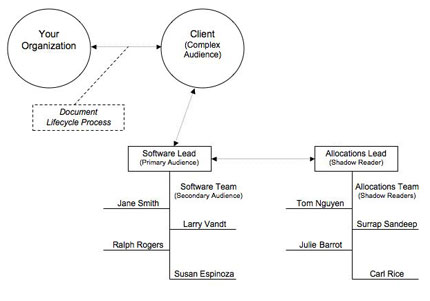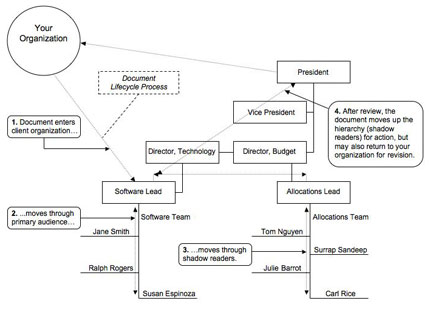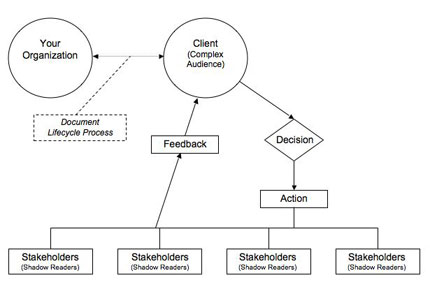Reading and Action Stage

Welcome to the Purdue OWL
This page is brought to you by the OWL at Purdue University. When printing this page, you must include the entire legal notice.
Copyright ©1995-2018 by The Writing Lab & The OWL at Purdue and Purdue University. All rights reserved. This material may not be published, reproduced, broadcast, rewritten, or redistributed without permission. Use of this site constitutes acceptance of our terms and conditions of fair use.
Reading Stage
The following graphics illustrate the reading stage where your communication might be read by a number of people including your primary audience, secondary audience, and shadow readers:

Reading Stage

Reading Stage (Detailed)
Action Stage
The following graphic illustrates the action stage where your communication's information might lead to decisions, which in turn, can lead to action that influences the lives of your stakeholders. In a user-centered writing process, decision makers and stakeholders will provide feedback to help you further revise your communication:

Action Stage
References
Anderson, Paul V. Technical Communication: A Reader-Centered Approach. 6th ed. Boston: Thomson-Wadsworth, 2007.
Johnson-Sheehan, Richard. Technical Communication Today. New York: Pearson-Longman, 2005.